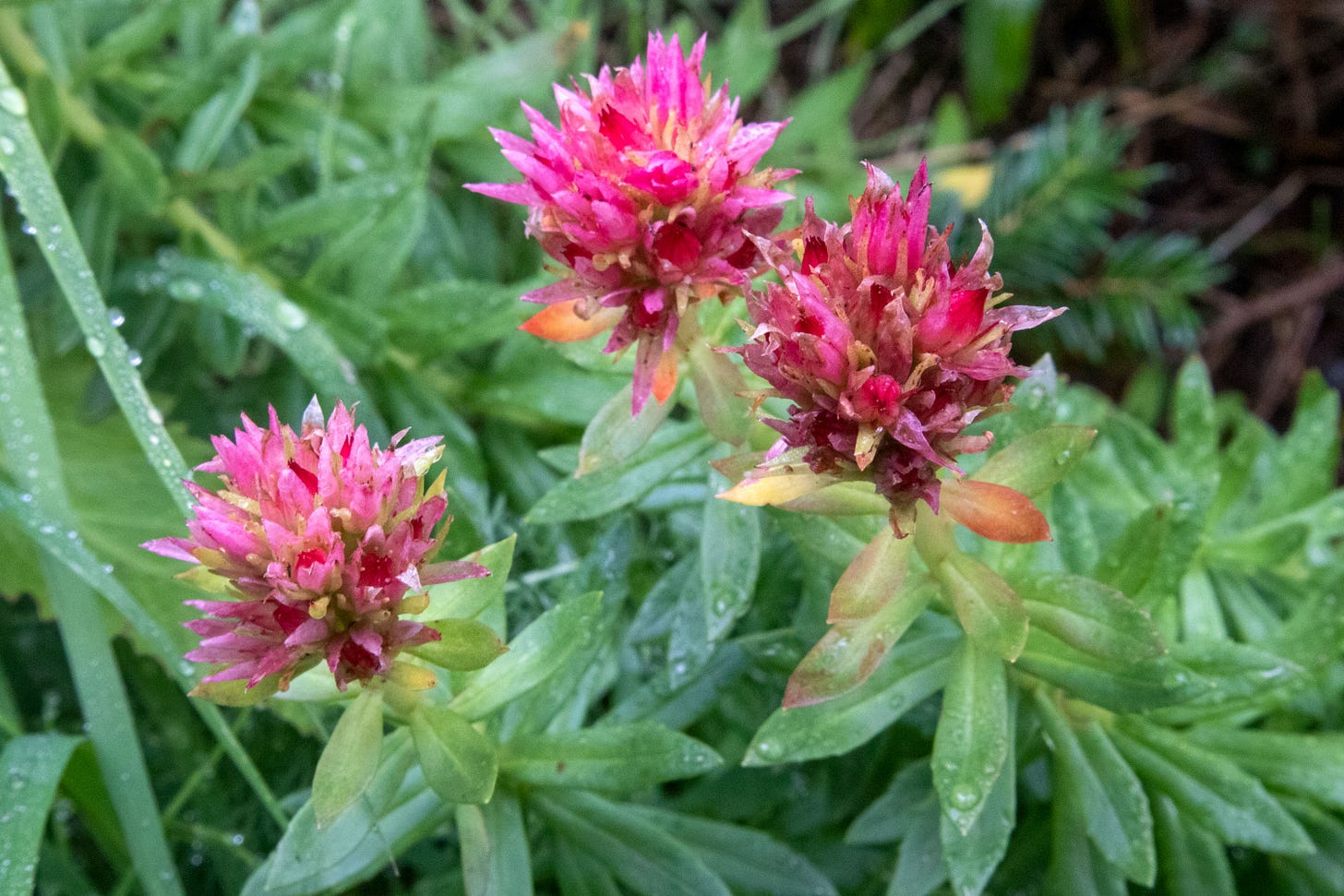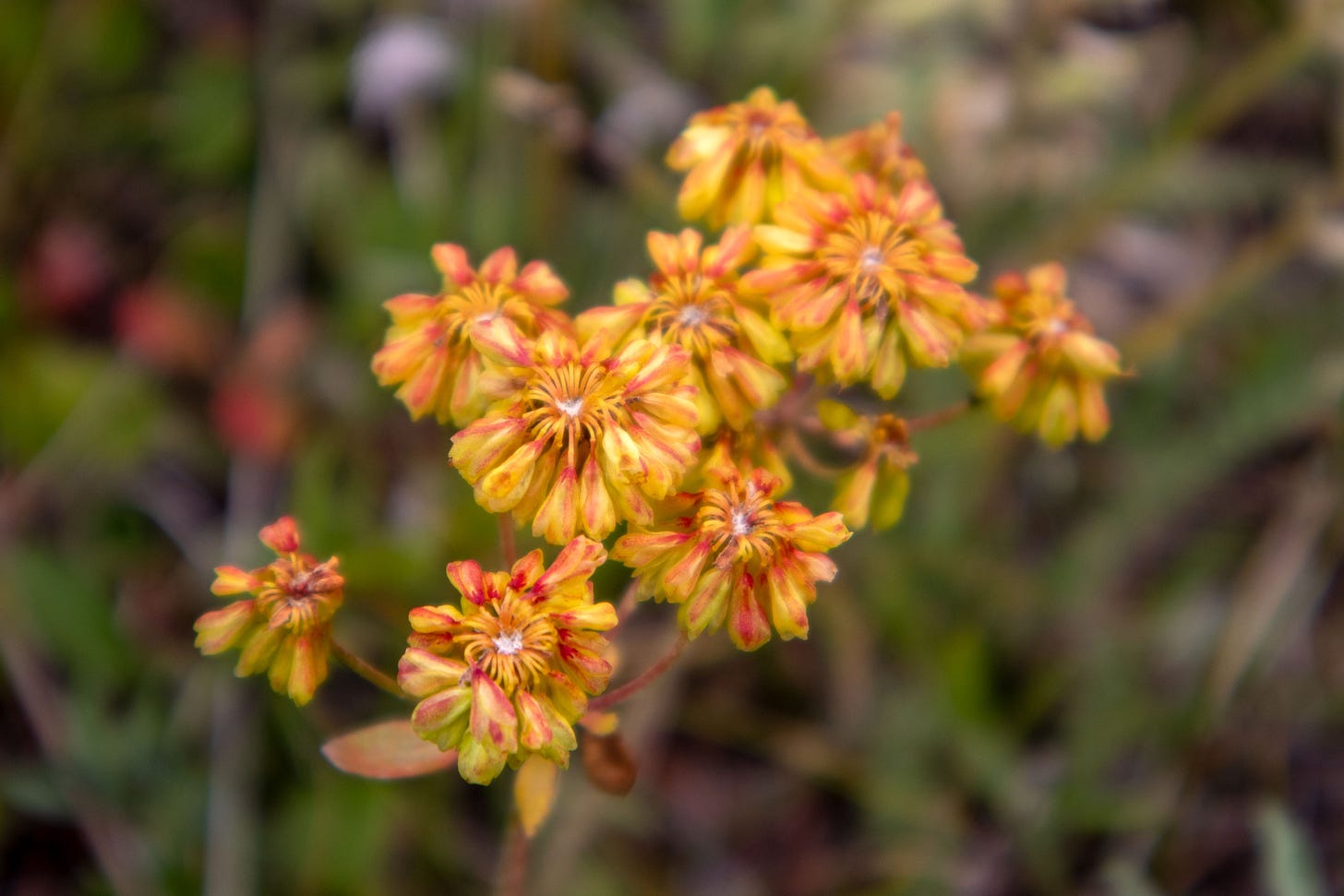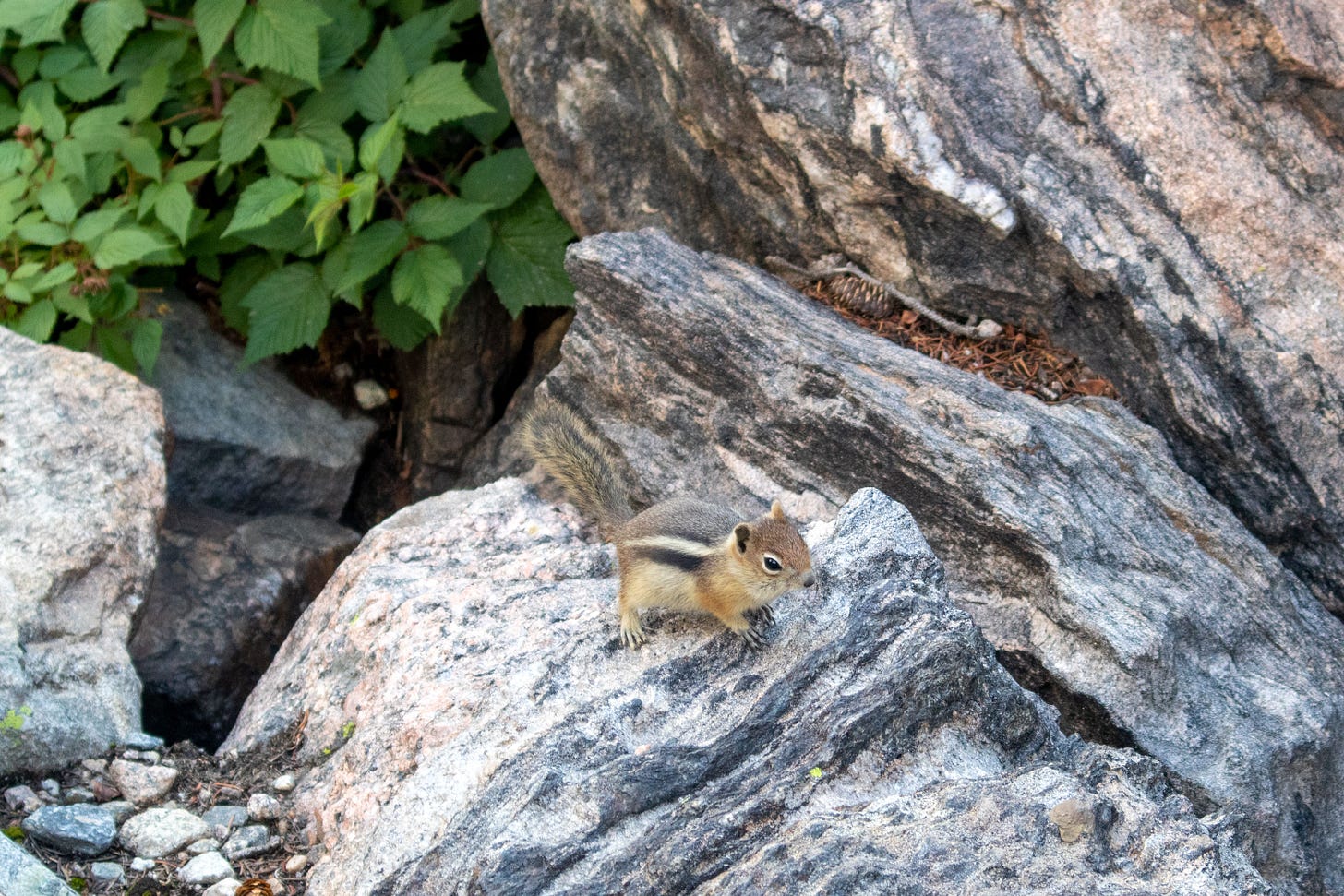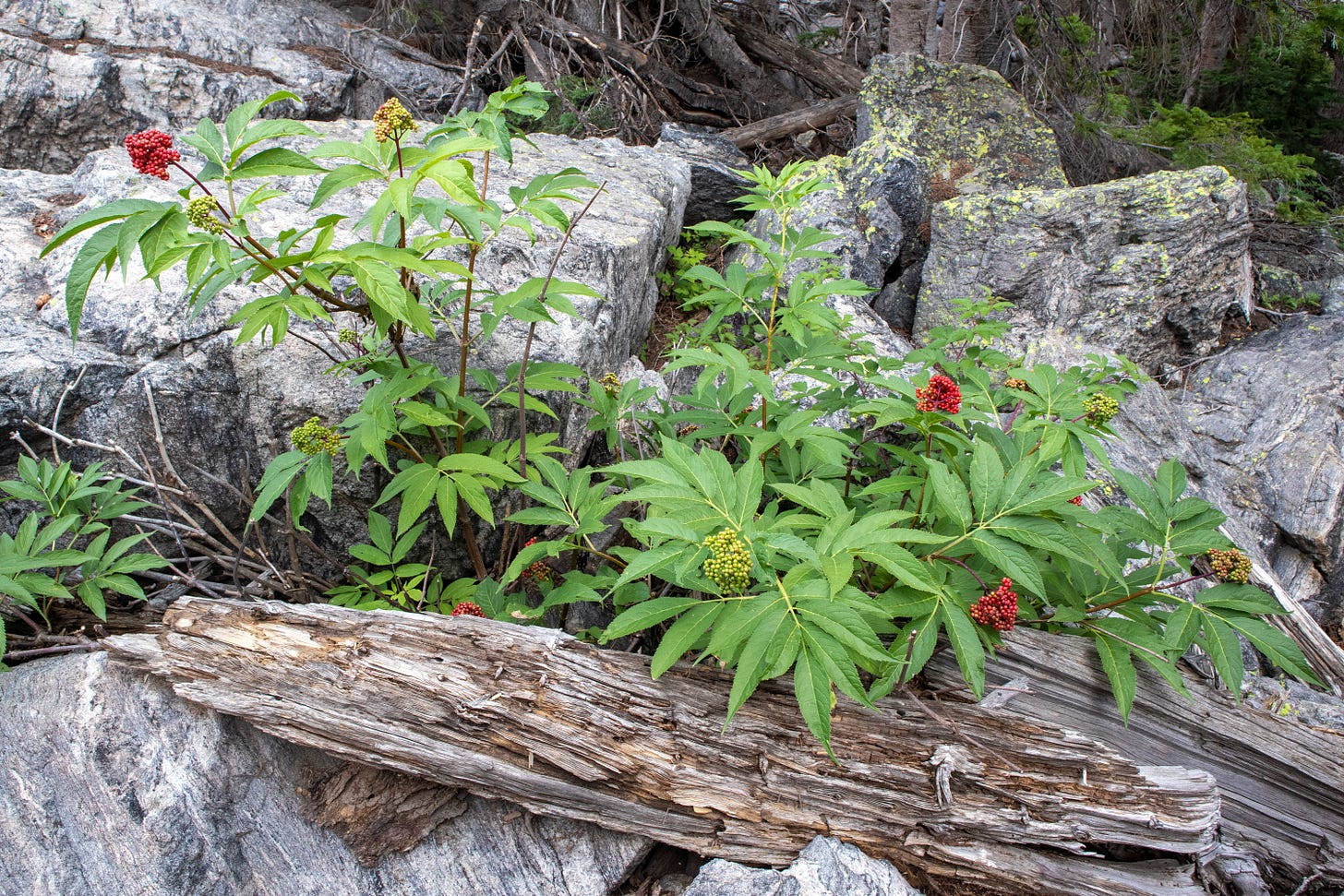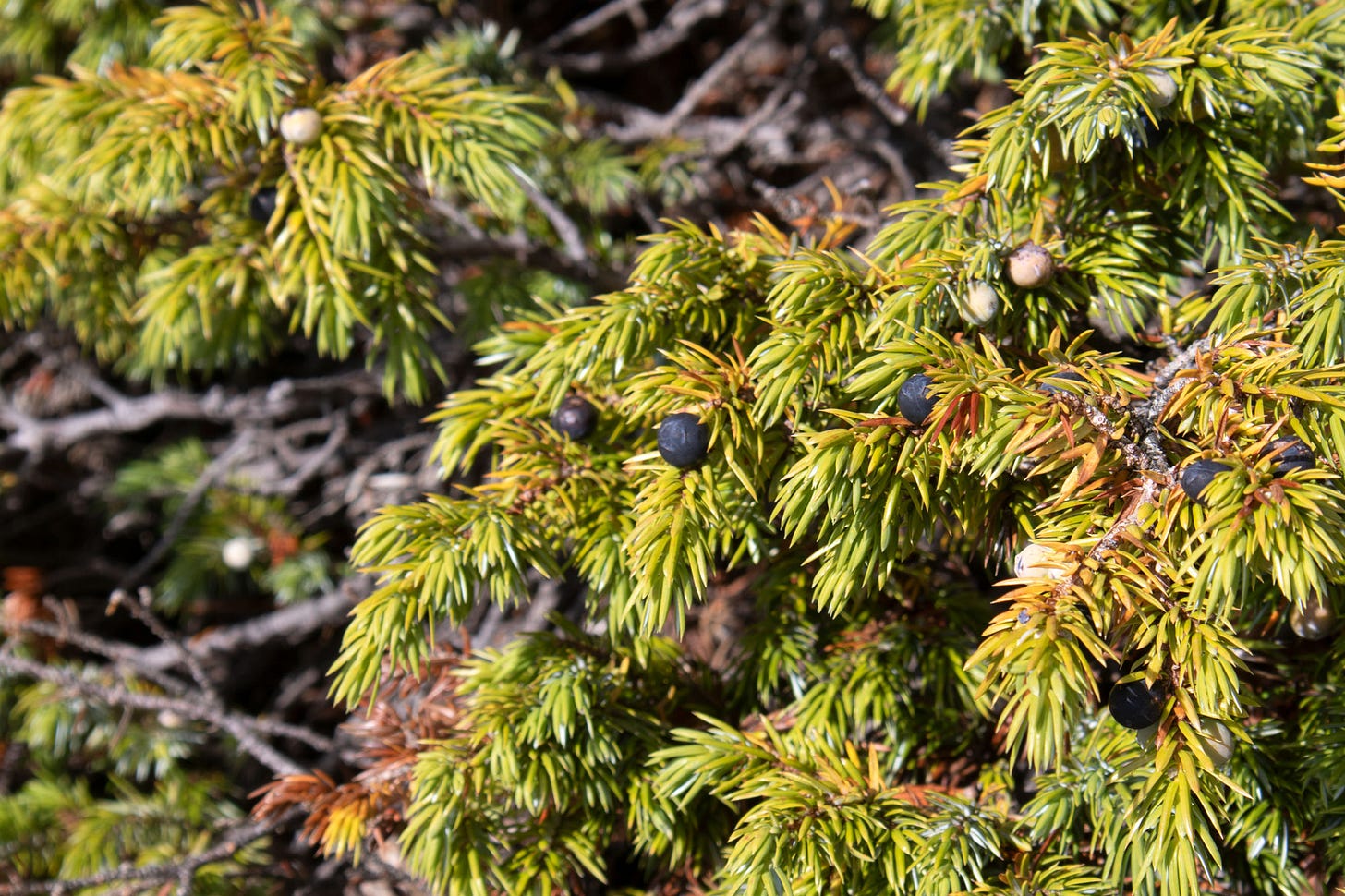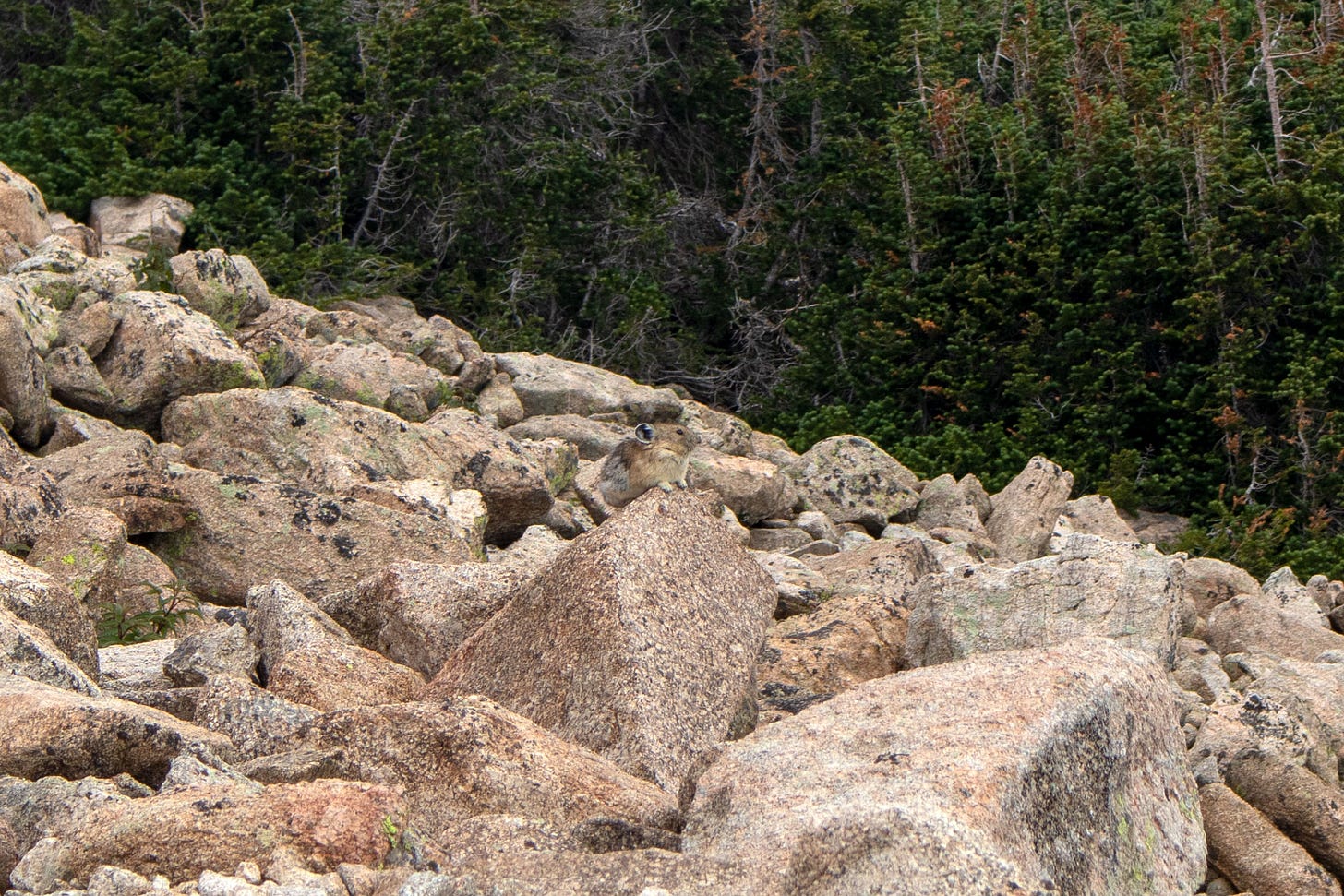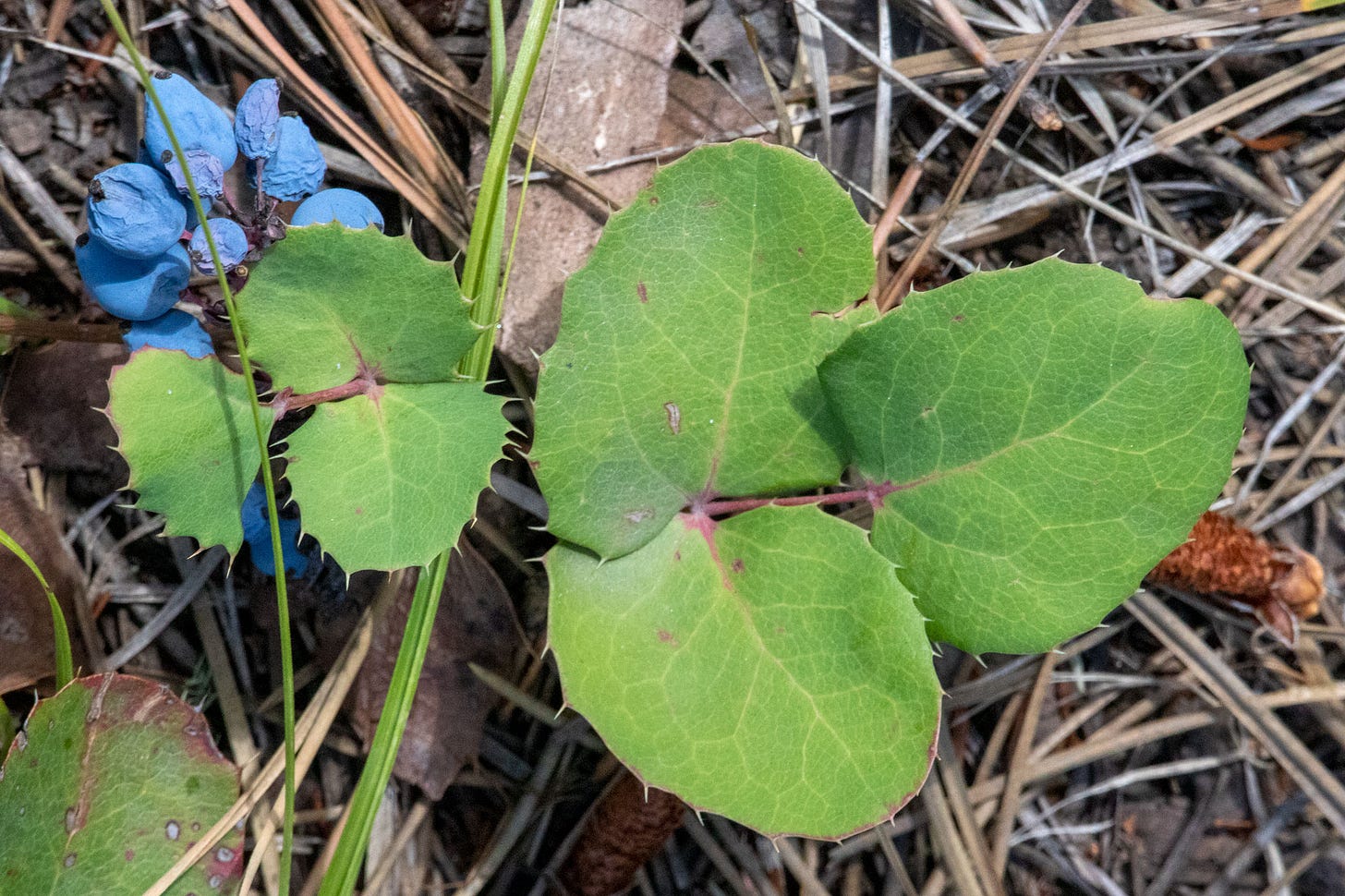
Last summer, I started using iNaturalist to keep track of the species I encountered during my outdoor adventures, and this practice has since developed into a rewarding hobby. Gathering species observations has encouraged me to see my surroundings in more vivid detail. It also weaves a common thread through my explorations that inspires me to learn about the organisms I come across and the natural communities they belong to.
If you’re unfamiliar with iNaturalist, you can learn more about it here. In a nutshell, it’s a website that allows you to log your natural history observations, identify the species you encounter, organize and annotate your findings, and participate in citizen science projects.

Over time, I’ve started to build a record of the habitats I explore—my own little natural history database. It’s fun to look back on my entries from time to time, to see what I observed during a recent hike, for a specific location, or throughout an entire season.

And so, now that autumn has arrived, I decided it’s time to review the species I made note of during this past summer—to summarize what I logged and learned.
iNaturalist Observations ~ Summer 2022
This summer, I made 53 observations (36 research-grade) and logged a total of 47 species in 12 locations. Below, I’ve included a handful of highlights and notes from my collection.
Queen's Crown (Rhodiola rhodantha)
Queen’s Crown is a species of stonecrop that is native to Colorado that occurs along alpine streams and in wet meadows. I came across it at Brainard Lake Recreation Area growing near South Saint Vrain Creek.
Another closely related species, King’s Crown (Rhodiola integrifolia), can be found in the same range and habitat as Queen’s Crown.
The two species can be distinguished by their flower petals. Queen’s Crown has longer petals that are pink, rose, or white, while King’s Crown has shorter petals that are deep red to purple.
Next summer, it will be interesting to revisit this location to look for some King’s Crown as well.
Sulfur Buckwheat (Eriogonum umbellatum)
While wandering the trails at Caribou Ranch Open Space, I stumbled upon this Sulfur Buckwheat. Even though it was past its prime, I was drawn to the color and shape of the flower heads.
Reading up on it, I discovered that this species serves as a host plant for a variety of butterfly larvae, such as Bramble Hairstreak, Mormon Metalmark, Rocky Mountain Dotted Blue, and Lupine Blue—a species that I spotted back in June at Soapstone Prairie.
Sulfur Buckwheat is native to western North America and grows in a wide variety of habitats, including sagebrush meadows, subalpine forests, and alpine areas above the treeline.
Golden-mantled Ground Squirrel (Callospermophilus lateralis)
This Golden-mantled Ground Squirrel greeted me on the trail from Lake Haiyaha one evening in late August. Golden-manteled Ground Squirrels occur throughout the mountains of the west in chaparral, scrub forests, meadows, sagebrush flats, and rocky terrain.
Golden-manteled Ground Squirrels feed on a wide variety of food, including pine nuts, mushrooms, acorns, insects, eggs, herbs, and shrubs. They also tend to beg humans for handouts whenever the opportunity arises—remember: don’t feed the Golden-mantled Ground Squirrels!
These ground squirrels are notable for the golden-red fur on their head and shoulders, as well as the distinct black and white stripe that runs down their back. They also have a ring of white or cream-colored fur around their eye.
Red-berried Elder (Sambucus racemosa var. microbotrys)
I came across this beautiful Red-berried Elder on the trail to Lake Haiyaha in late August. What caught my eye immediately were the beautifully colored clusters of red, orange, and yellow berries.
The fact that this shrub was in fruit yielded a further clue about its identity. There are two varieties of Sambucus racemosa that occur in Colorado. These varieties are difficult to distinguish unless the fruit is present. Red or yellow fruit indicates the var. microbotrys, while purple or black fruit of the var. melanocarpa.
The stems, roots, and foliage of Red-berried Elder are poisonous. The fruit can be toxic if eaten raw. The cooked fruit is said to be edible and was used in traditional medicine by Native Americans to treat various ailments (still, I wouldn’t advise ingesting it, cooked or not.)
Snakeweed Grasshopper (Hesperotettix viridis)
No one will ever convince me that insects don’t have full-blown personalities. I found this Snakeweed Grasshopper sitting proudly atop a Curlcup Gumweed flower in a field near my local library. As I photographed her (I’m pretty sure this is a female), she turned to face the lens and watched me as I watched her.
Snakeweed Grasshoppers live throughout much of North America, but within that range, their distribution can be patchy. They are more common in the west where they thrive in shrublands, grasslands, and fields. Snakeweed Grasshoppers feed primarily on shrubs belonging to the composite family (Compositae), such as rabbitbrush, broom snakeweed, burroweed, and western ragweed.
Adult Snakeweed Grasshoppers spend most of their time on or near their host plant. Females can be differentiated from males by wing length—males have wings longer than their abdomen, females shorter.
Grayleaf Willow (Salix glauca)
While hiking up from Brainard Lake toward Mount Audubon, I repeatedly encountered hearty thickets of Grayleaf Willow. This species is one of over thirty willows native to Colorado. It occurs at elevations of 7,500 to 13,500 feet, where it grows along streams, in forests, and above the treeline.
Grayleaf Willows serve as valuable food sources (especially during winter) for animals such as elk, deer, moose, and snowshoe hares. Native Americans used these and other willows for making baskets, bows, arrows, and medicines.
According to Professor Nancy Emery, Niwot Ridge Long Term Ecological Research scientists have observed Grayleaf Willow encroaching into tundra plant communities. This gradual expansion of the willow’s range into the alpine tundra is likely due to climate change underway in these fragile environments.
Common Juniper (Juniperus communis)
The Common Juniper is a widespread evergreen shrub belonging to the Cypress family. It has the most extensive geographical range of all the woody plants and can be found throughout a vast circumpolar region in the Northern Hemisphere. In Colorado, it grows in aspen and spruce-fir forests at elevations of 5,500 to 12,700 feet.
Common Juniper is a low, spreading shrub that rarely tops 3 feet. It has short, sharp needles. The species is dioecious, which means that male and female cones grow on separate plants.
Female cones, or juniper berries, resemble round berries. They start out green and ripen over the course of 18 months, eventually turning purple-black. Seeds are dispersed by birds, who eat the juniper berries and digest the fleshy parts while passing the hard seeds in their droppings.
Male cones are tiny and located at the tips of branches. The male cones produce and release pollen at which point the cones disintegrate.
American Pika (Ochotona princess)
I’m always thrilled to come across an American Pika while hiking. I usually hear them long before I see them; they’re so well camouflaged. Even if I do eventually spot one, they’re usually on the move—a little furry blur.
The vocalizations of American Pikas are sharp whistles or bleating calls. Individual pikas stake a claim to a territory that they defend vigorously. They often sit motionless atop a rock and watch for intruders. They are common on rockpiles and talus slopes above the treeline. Their range encompasses the mountains of western North America.
American Pikas are herbivores that feed on many different kinds of plants—grasses, thistles, sedges, and fireweed. Some populations are declining, a trend attributed to habitat loss, global warming, and the pika’s intolerance of warmer temperatures.
Richardson’s Geranium (Geranium richardsonii)
Richardson's Geranium is a perennial herb that occurs in Colorado throughout moist meadows, along streams, and aspen forests at elevations between 6,000 and 12,700 feet. Beyond Colorado, its range extends throughout western North America from Alaska to New Mexico.
I found this Richardson’s Geranium growing in Moraine Park near the trail to Cub Lake in Rocky Mountain National Park. The flower of this geranium has five pointed sepals that sit beneath its five rounded petals. The petals are white or sometimes light purple, with veins of darker purple.
This is the second species of geranium I observed this summer, the other was the Pinewoods Geranium, which I came across while hiking at Caribou Ranch Open Space.
Creeping Mahonia (Berberis repens)
Another interesting plant I encountered while hiking near Cub Lake was Creeping Mahonia, an evergreen subshrub that boasts yellow flowers that give rise to blue-colored berries. This native species is hardy—it tolerates drought frost, and heat well and for this reason, is a popular species with gardeners who use it as an attractive ground cover plant.
Creeping Mahonia is a native inhabitant of the Rocky Mountains region and can be found throughout a wide swathe of the North American west.
Well, that wraps up my review of my summer of natural history observations. I’m already looking forward to logging new species this fall and continuing to expand my natural history knowledge and adventures.
If you are on iNaturalist and would like to connect, you can find my profile here or leave a link to your profile in the comments below. I’d be glad to give you a follow!



